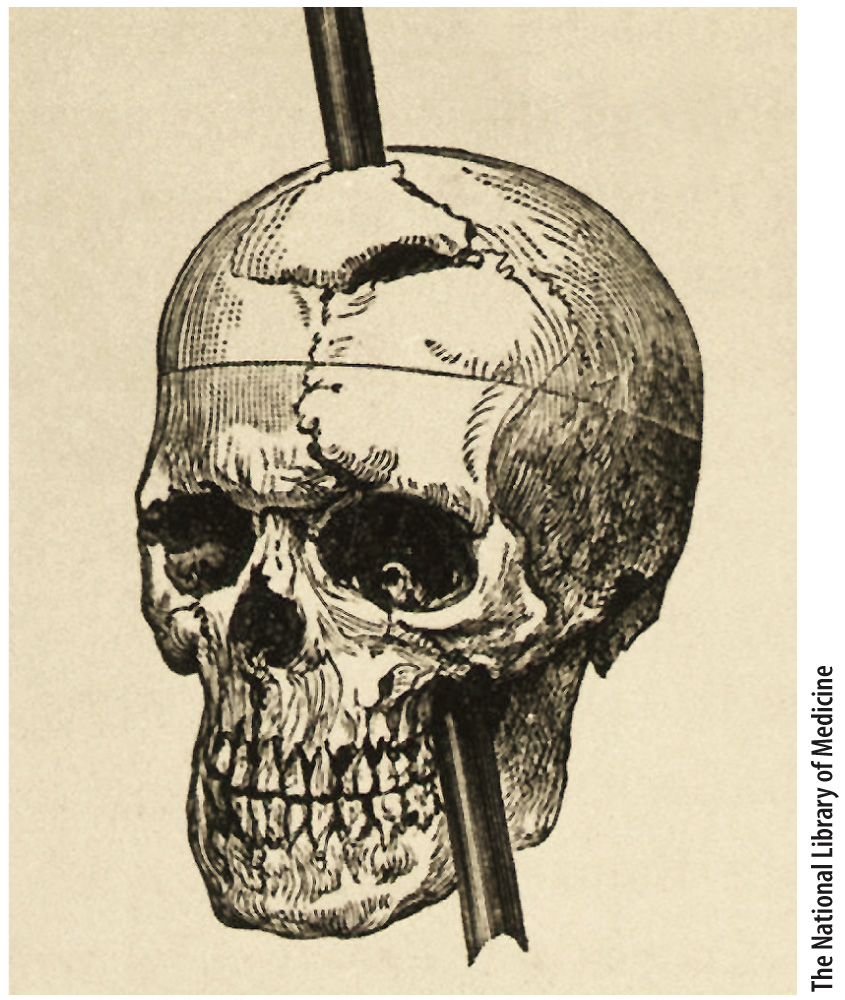36.5 Brain Organization and Function

FIG. 36.21 The skull of Phineas Gage. Phineas Gage survived an accident in which a tamping iron passed through his skull, but his personality changed and his intellectual capacity diminished.
Up to this point, we have looked at how sensory information, such as smell, taste, hearing, and vision, is detected by sensory receptors. In each case, the sensory information is sent to the brain, where it is processed and integrated. Much of what we know about how the brain functions has been accumulated over many years by studies of patients who suffered brain injuries.
A well-known example is Phineas Gage, a railroad worker who in 1848 survived severe damage to his brain’s frontal lobe. A tamping iron he was using to set a dynamite charge caused the dynamite accidentally to explode, sending the iron through his skull and the frontal cortex of his brain (Fig. 36.21). Gage had been hard working, responsible, and well liked; after the accident, he was given to fitful arguments, lacked self-control, and seemed less intelligent. These changes provided some of the first evidence that particular brain regions control particular aspects of a person’s behavior and cognitive function.
The remainder of this chapter explores the functional organization of the vertebrate brain. We discuss examples that show how the brain organizes sensory information, and how memories of sights and sounds, for example, are formed.
